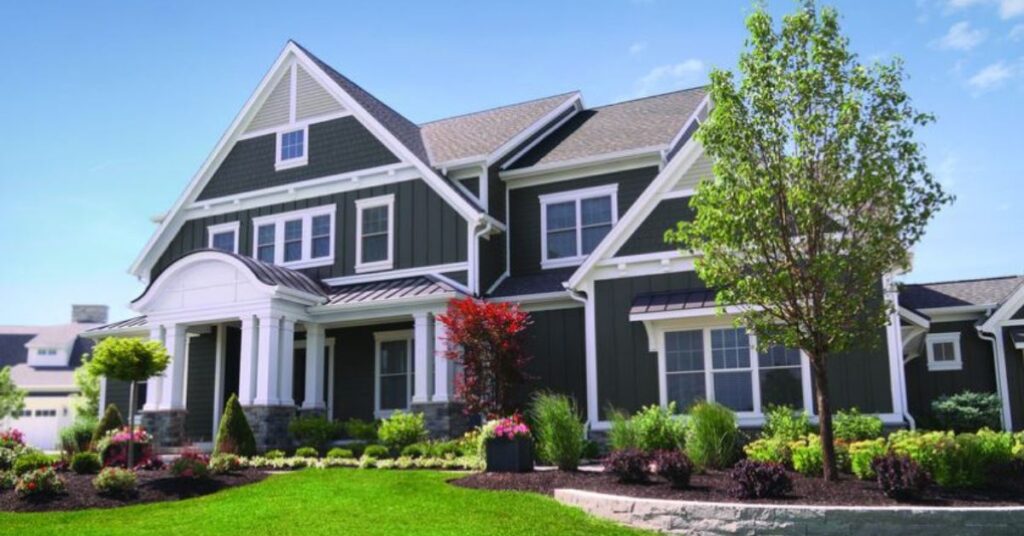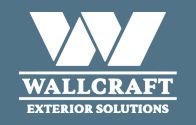Advantages of James Hardie Board Siding vs Vinyl Siding

Table of Contents
When building or remodeling a home, one of the key decisions you’ll face is choosing the right exterior siding. Introduced in the 1960s as an alternative to aluminum, vinyl siding was a leading exterior siding option for some time. But now, many homeowners prefer James Hardie Board siding to vinyl siding. Vinyl siding can become brittle over time, suffering from damage due to wind, hail, or temperature fluctuations. In contrast, Hardie® fiber cement siding, known for its durability and thickness, offers robust protection against various elements, ensuring years of low-maintenance service.
This article compares vinyl siding with James Hardie fiber cement siding to help you make an informed choice for your home.
Reasons Why James Hardie Siding Is Better Than Vinyl Siding
At Wallcraft Exterior Solutions, we prefer James Hardie siding over vinyl siding for several compelling reasons. From its unmatched durability to aesthetic versatility, James Hardie Board Siding offers homeowners a superior choice in exterior cladding.
Durability and Longevity
James Hardie Board Siding is renowned for its exceptional durability. Made from a mix of cement, sand, and cellulose fibers, it resists warping, cracking, and rotting – issues often faced with vinyl siding. Capable of withstanding extreme weather, James Hardie siding outperforms vinyl siding, providing a long-lasting, robust solution for any home.
Fire and Heat Resistance
Unlike vinyl siding, which is prone to melting or burning under significant heat or flame, James Hardie siding is non-combustible. This fire resistance adds a crucial safety layer, making it a preferred choice in wildfire-prone areas or for those prioritizing fire safety. Vinyl siding also struggles with warping due to heat, which is not a concern with Hardie Board.
Aesthetic Appeal and Versatility
James Hardie siding offers a wide array of aesthetic options, closely mimicking the look of wood siding, shingles, or even stone, but without the maintenance. Available in various styles and colors, homeowners can enhance their home’s curb appeal and match the architectural style effortlessly. The thickness of James Hardieplank siding provides authentic shadow lines and a more natural wood appearance. Vinyl siding is thinner and has a less authentic look in comparison.
ColorPlus Technology
ColorPlus Technology in James Hardie siding ensures superior color consistency and resistance to fading, unlike vinyl siding, which can suffer from uneven color fading with sun exposure. Hardieplank with ColorPlus Technology resists chipping, peeling, cracking, and UV rays, ensuring long-lasting vibrancy. The 15-year limited warranty on this finish covers paint and labor, offering peace of mind.
Superior Weather Resistance
Engineered to withstand harsh climates, James Hardie siding maintains its integrity and appearance in extreme conditions, from heat and cold to humidity and salty air. Vinyl siding, conversely, is more susceptible to damage from high winds, hail, and temperature extremes.
Resistance to Pests and Moisture
James Hardie Board’s resistance to termites and carpenter ants sets it apart from wood-based sidings. It also boasts superior resistance to moisture and mold, making it ideal for humid climates or rain-prone areas. Vinyl siding, while pest-resistant, can sometimes trap moisture, leading to mold and mildew.
Better For The Environment
James Hardie Board Siding is more environmentally friendly than vinyl siding. Made from natural and sustainable materials, it’s a greener choice that reduces waste thanks to its longevity and infrequent need for replacement.
Higher Return on Investment
Though initially more expensive, James Hardie siding offers a higher return on investment over time with less maintenance and repairs. Its durability, appealing appearance, and low maintenance make it a valuable addition to any home, often becoming a selling point.
Lower Maintenance
Hardie Board requires less upkeep than traditional wood siding and is easier to maintain than vinyl. Its color retention is superior and typically needs occasional cleaning with mild soap and water to stay in top condition.
Contact Wallcraft Exterior Solutions For Your James Hardie Siding Needs
Choose James Hardie Board Siding for a durable, aesthetically pleasing, and low-maintenance solution for your home. At Wallcraft Exterior Solutions, we bring over 30 years of combined experience in siding installations, guiding you to make the best choice for your home.
If you have any questions about James Hardie Siding and its benefits, please contact us today. Let us help you give your home the protection and curb appeal it deserves with high-quality siding solutions.
FAQ About James Hardie Board Fiber Cement Siding
James Hardie siding is often considered superior to vinyl siding due to its durability, fire resistance, aesthetic versatility, and ability to withstand extreme weather conditions. While it may be more expensive initially, its long-term benefits often outweigh the cost difference.
The primary downside of James Hardie siding is its higher upfront cost compared to vinyl siding. It also requires professional installation due to its weight and the specific techniques needed for installation. Regular painting and maintenance are also needed to keep it in top condition.
Yes, you can replace vinyl siding with Hardie board. Many homeowners choose to upgrade to Hardie board for its enhanced durability and aesthetic appeal. It’s important to have a professional assess your home’s structure to ensure it can support the weight of the Hardie board, as it is heavier than vinyl siding.
For many homeowners, Hardie siding is worth the investment. Its longevity, resistance to fire and weather, and the aesthetic value it adds to a home make it a cost-effective choice in the long run. Additionally, it can increase the resale value of your home.
Vinyl siding is generally cheaper than HardiePlank in terms of initial cost. However, considering the longevity and durability of HardiePlank, the long-term cost can be comparable or even lower than that of vinyl siding when factoring in maintenance and replacement costs.
Hardie board is highly resistant to mold and mildew growth due to its composition. Unlike wood or certain other siding materials, it does not retain moisture, which helps prevent mold growth. However, like all exterior home materials, proper installation and maintenance are key to preventing mold and other issues.
